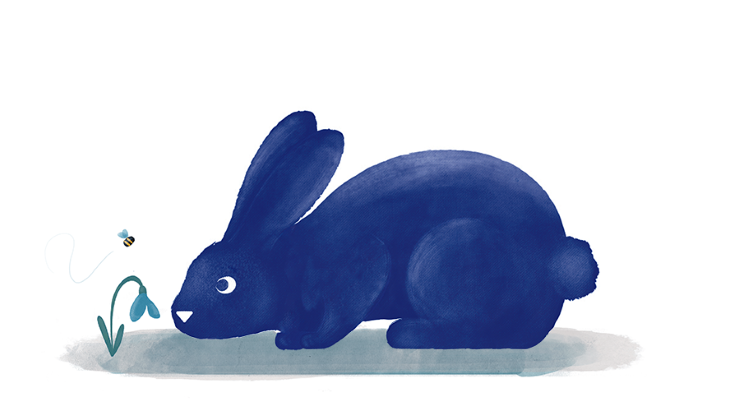Our Rabbit Care Guide
Caring for your pet rabbit
Keep your rabbit healthy and happy with our essential guide.
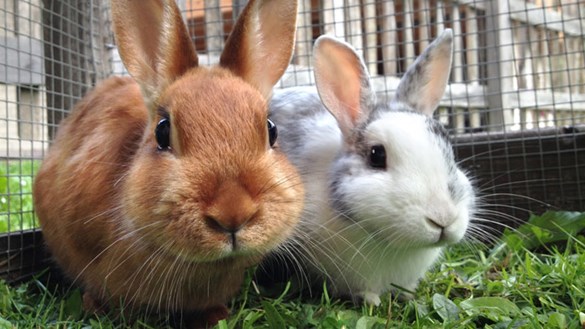
There are about 1.7 million rabbits kept as pets in the UK. Depending on the breed and with the right care, including a well-balanced diet and a comfortable home, they can live for around 10 years.
While there’s no perfect way to care for all rabbits because each rabbit and situation is different, we’ve put together a comprehensive guide to provide you with the basics of caring for your pet.
Diet
Pet rabbits are very similar to their wild cousins, so their diet should mimic that of a wild rabbit as closely as possible.
They need plenty of high-quality fibre to maintain healthy teeth (which continue to grow throughout their lives) and a healthy gut. Feeding your rabbit the wrong food or portion size can result in urinary and dental problems. A great way to check you’re feeding your rabbit correctly is by checking their droppings; they should be large and look like compressed hay.

Hay and grass
Rabbits need unlimited access to hay, as grass-based products should make up around 80% of their diet. That means fresh and dried grass and meadow hay. Not only do hay and grass meet all their basic nutritional requirements, they also have many other benefits, including maintaining healthy teeth which continue to grow throughout their lives.
Rabbits that don’t eat enough hay or grass can develop painful ‘spurs’ on their teeth, which make eating difficult. Avoid feeding your rabbit lawnmower clippings as these ferment quickly and can be extremely harmful.
Vegetables
Rabbits can have a small amount of vegetables each day, accounting for around 15% of their diet. This not only provides your rabbit with other nutrients and vitamins, it also gives them a variety of different flavours and textures to enjoy. Make sure to wash all greens and vegetables thoroughly before feeding them to your rabbit.
Safe vegetables for rabbits include:
- Asparagus
- Basil
- Broccoli
- Brussel sprouts
- Carrots
- Cauliflower
- Celery leaves
- Chard
- Courgette
- Dock
- Green beans
- Romaine lettuce
- Parsely
- Radish tops
You should avoid feeding your rabbit:
- Amaryllis
- Bindweed
- Bracken
- Cabbage
- Chive
- Elder poppies
- Garlic
- Privet
- Leek
- Lupin
- Oak leaves
- Onion
- Potato
- Ragwort
Pellets
While commercial foods were the basis of most rabbit diets in the past, modern diets only require around 5% of pellet-based foods. Opt for good-quality pellets that are high in fibre, and avoid a mix or muesli foods, which encourage selective eating.
Treats
Just like humans, giving your rabbit too many treats can cause obesity and other serious health issues. Excess sugars and starchy treats can disrupt the delicate balance of bacteria in their gut, leading to digestive issues. Many rabbit treats available (such as milk-based yogurt drop or sweetened cereal sticks) should be avoided. Instead, a chunk of broccoli or a piece of coriander or mangetout is a great treat.
Water
Rabbits need access to fresh water at all times. Bowls are preferable to bottles as they’re easier to drink from and won’t become blocked. Make sure you change their water daily and thoroughly clean out bowls and bottles regularly.
Health
As well as regular health checks, rabbits should be vaccinated against two serious and fatal diseases: Myxomatosis and Viral Haemorrhasic Disease (RHD) as soon as they reach five weeks old. They should also be given annual booster vaccines to maintain their protection.
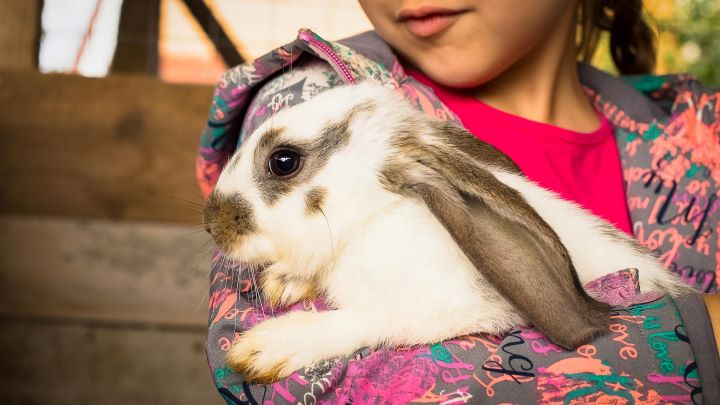
Myxomatosis
Myxomatosis is a highly infectious disease that causes swelling, inflammation and discharge around the eyes. If an unvaccinated pet catches the disease, it’s unlikely they’ll recover, even with intensive treatment. Myxomatosis is usually spread by insects carrying the virus, but direct rabbit-to-rabbit contact can also spread it. As well as regular vaccination, there area few ways you can minimise risk:
- Choose dust-extracted hay or kiln-dried grass
- Fit insect screens to outdoor enclosures
- If you have cats or dogs, make sure they’re treated for fleas
- Prevent wild rabbits from getting into your garden
- Ensure there’s nothing to attract vermin and wild birds to runs, and use small-hole mesh to keep unwelcome visitors out
Viral Haemorrhagic Disease (RHD)
RHD only affects adult rabbits and hares and is spread through saliva, nasal discharges or faeces. The virus causes serious internal bleeding and is fatal to unvaccinated rabbits, with many pets showing no sign of disease at all. It’s incredibly easy for rabbits to catch RHD - via other rabbits, through people, clothing, objects, or even on the wind. That’s why all rabbits should be properly vaccinated against the disease.
Flystrike
Flystrike (myiasis) is caused when flies lay eggs on rabbits, which subsequently hatch into maggots. Flystrike is most common during the summer, although it can occur throughout the year, and rabbits with dirty bottoms due to bad diet or wounds are particularly at risk.
If you think your rabbit has flystrike, it’s essential that you call your local vet for immediate treatment, which includes clipping away the affected fur and removing the maggots under anesthetic. Unfortunately, flystrike is often fatal, though fast diagnosis and treatment can result in a full recovery.
Neutering
Neutering your rabbit has a number of great benefits besides the prevention of pregnancy. Male rabbits usually behave better when neutered, with fewer aggressive behaviour towards other rabbits and people. A large proportion of female rabbits develop uterine cancer after the age of two if they aren't spayed.
A male rabbit can be castrated from three to months old, and a female rabbit can be spayed from six months.
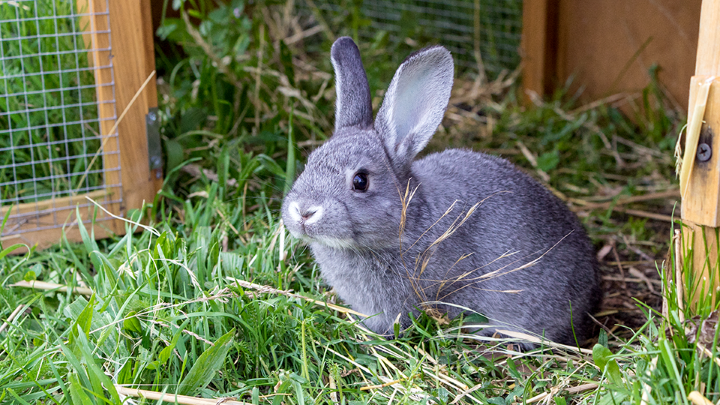
Environment
Rabbits are incredibly active and sociable animals, and they need plenty of space to be able to run, jump, dig, stretch out and stand upright. When housing your rabbit, make sure you provide a large living area and secure shelter, and ensure that it’s suitably ventilated, dry and free of draughts.
Your rabbit should also have regular access to a large, secure run to encourage exercise and play. This should include soft toys, chews and tunnels to give your pet plenty of things to explore and play with. You should also give them a space to hide if they need to, as well as shelter from rain or hot sun.
House rabbits
Many owners choose to keep house rabbits, but bear in mind that indoor pets need just as much space and stimulation as their outdoor equivalents. That means you may need to prepare your home, making it safe and secure (many houseplants can be toxic to rabbits), with dedicated areas for going to the toilet and sleeping.
Whether you let them have the run of the house or give them their own separate space, you need to make sure electrical wires are kept well out of the way and there are no means of escape.
Personality
Rabbits naturally live in groups, so you should always avoid keeping just one. They require a lot of social interaction, and can easily become lonely without it. The easiest pairing is a neutered male and female, as same-sex pairs can be difficult, particularly if they’re from different litters.
Aggressive behaviour
Some rabbits can display aggressive behaviour, and unfortunately it’s one of the biggest reasons pet rabbits end up in animal shelters for rehoming. Some aggression can be natural for rabbits due to their prey status in the wild, and they often try to fight back with their teeth, claws and powerful hind legs if a predator attacks them. However, pet rabbits display aggression less often:
- If a rabbit hasn’t been properly socialised they can view human interaction as a threat
- Unspayed female rabbits can become aggressive during spring (their natural breeding season) as a result of hormones
- They can become aggressive if they’re in pain or discomfort
The best way to prevent aggressive behaviours is to socialise your pet from an early age to help them become comfortable around humans, and provide them with sufficient space to exercise, explore and keep them from becoming bored. Neutering is also an effective way to prevent aggression.
Grooming
Regular grooming is important for pet rabbits. As well as keeping nails clean and trimmed, you should also care for their fur with regular brushing to avoid matting. This also gives you a chance to look them over for any health issues.
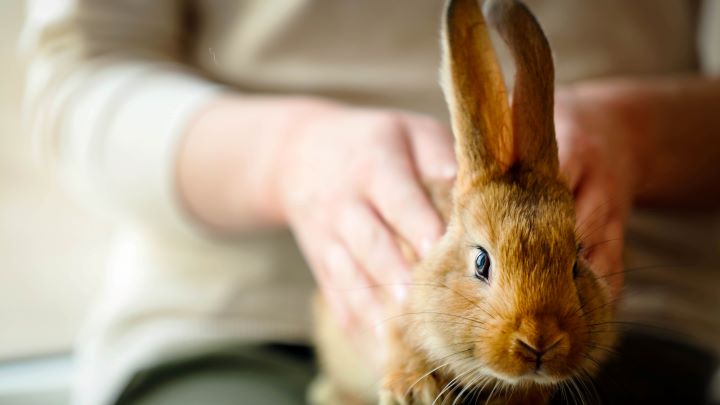 Short haired breeds need grooming with a soft-bristled brush around once a week. This should be increased to a few times a week when they start moulting.
Short haired breeds need grooming with a soft-bristled brush around once a week. This should be increased to a few times a week when they start moulting.
Long-haired breeds require more maintenance, with daily brushing and regular clipping. Start with a wide-tooth comb all over, then move on to a finer comb before finishing with a flea comb around the ears, under the chin and in the armpits.
Book an appointment through My Medivet
Medivet clients can book and amend appointments online, access pet records and more.


